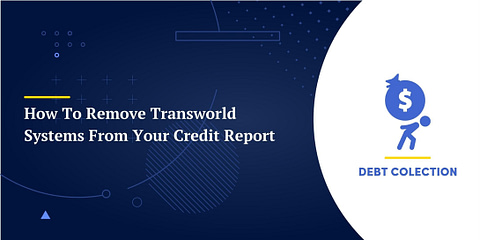Credit is a hot topic, and much of the discussion revolves around how to improve a poor credit score. Articles and videos promising quick fixes and dramatic improvement are everywhere. Everyone claims to have a special secret, and most of the secrets are for sale. But are these secrets real? Which ones work and which ones are credit repair myths?
Let’s take a closer look.
Start With Some Truth
Before we look at the myths, let’s start with a grounding in reality.
What is Credit Repair?
There are two ways to improve your credit score.
- Credit building is the process of adding positive information to your credit report. You do this by paying all bills on time, keeping your credit utilization low, maintaining a good credit mix, and generally managing your finances well.
- Credit repair is the process of removing negative information from your credit report, generally by using established dispute processes.
Credit repair is an appealing idea because it promises a rapid change in your score. Credit building takes time, especially if your score is weighed down by past indiscretions.
Credit repair gets fast results: knock off those derogatory records and watch your score soar! That promise has generated a huge range of myths.
Your Rights… and Theirs
The rules on credit reporting and scoring are laid out in the Fair Credit Reporting Act (FCRA). That law protects the rights of both consumers and lenders.
Consumers have the right to know what is in their credit reports. They have the right to dispute any information that is not accurate. They have the right to privacy: nobody can pull your full report without your signature. They have the right to be evaluated purely on their credit records: your credit report will not contain your age, income, race, religion, gender, sexual preference, or other extraneous information. Outdated information cannot be included in a credit report.
Lenders also have rights. If you apply for credit, the lender has a right to accurate information that is relevant to assessing your creditworthiness.
These rights play a central part in determining what credit repair can and cannot do.
A credit bureau is obligated to remove information that is incomplete or inaccurate from your credit report. Including that information would violate your right to accurate reporting.
At the same time, a credit bureau has an obligation to include the information that lenders need to honestly assess your creditworthiness. Removing accurate information from your credit report is a violation of the lender’s rights. You may not want a potential lender to know about that collection account, charge-off, or bankruptcy, but they still have the right to know.
10 1/2 Credit Repair Myths
The credit repair process has generated a small industry in revealing credit repair “secrets”. Many of these secrets have little basis in reality. Many are designed to sell you something. Let’s look at a few.
CREDIT REPAIR MYTH #1
The Secret Magic Dispute Letter (the “609 Letter”)
Dispute letters are a key part of getting inaccurate information removed from your credit report. Many credit repair “experts” sell templates for letters that they claim have the ability to get even accurate information removed. They often claim that there is some special wording or threat that will generate instant removal of derogatory records.
Reality
Packing your letter with legalese or threats to complain to the CFPB won’t help, because no human being will ever read your letter. It will be fed into a system called e-OSCAR (Online System for Complete and Accurate Reporting). The system will scan your letter and assign a code. Common codes include:
- 001 – Not his/hers
- 002 – Belongs to another individual with same name
- 008 – Late due to changed address or failure to receive statement
- 010 – Settled or partial payment accepted
- 019 – included in the bankruptcy of another person
- 038 – Account closed by consumer
These codes have nothing to do with priority: an 001 will not be resolved faster than an 019. They just tell the system what type of dispute it is. The system will then automatically request supporting information from the source that furnished the information.
Your dispute letter contains three pieces of information that matter:
- Your identity.
- The details of the specific account you’re contesting.
- The reason for the dispute.
Anything else is wasted. A long, detailed letter could even confuse the system and lead to misclassification.
There is no secret to dispute letters. Any letter that clarifies those three pieces of information will serve the same purpose.
🤓 Trivia: the term “609 letter” is misplaced: section 609 of the FCRA doesn’t even deal with the dispute process. Disputes are under section 611. Section 609 simply establishes your right to request detailed information in the event of identity theft.
📘 Find more details on how to write and what to include in a credit dispute letter: How To Submit A Section 609 Dispute Letter
CREDIT REPAIR MYTH #2
The Signed Contract Myth
This is a variation on the magic secret letter myth. The belief is that you can ask a credit bureau for an original signed contract establishing your debt and that if the credit bureau cannot produce the document, they will be forced to delete the account from your credit file.
Reality
There is no law or regulation requiring credit bureaus to keep or produce an original signed instrument of indebtedness. Credit bureaus are required to reveal any information they possess, but they cannot be required to produce information they don’t have.
CREDIT REPAIR MYTH #3
Paying Off an Overdue Or Collection Account Will Remove it From Your Credit Report
If you have an account overdue or in collections, all you have to do is pay it off, right? Once it’s paid that black mark will go away and your score will rise? That sounds reasonable, but it’s not the way it works.
Reality
Late payments, charge-offs, collection accounts, and most other negative records remain on your credit report for seven years from the date when the account first became delinquent. The account will be marked paid, but it will still be on your record.
Some negative records, like Chapter 7 bankruptcy, remain on your credit report for ten years.
There is some good news: those negative entries will have less impact on your credit score as they grow older. Current and recent accounts get more weight in your credit score than older accounts. A recent charge-off will hit your credit much harder than a charge-off 5 years ago.
📘 Wondering how long certain items can stay on your credit report? Let’s look at the rules and some common items you’ll find on credit reports: How Long Do Items Stay on My Credit Report?
CREDIT REPAIR MYTH #4
Closing Accounts Will Remove Them From Your Credit Report
Let’s say you have a credit card account with a long history of late payments. If you close that account, that history will disappear, right?
Unfortunately, this won’t work. If you close the account it will be listed as closed, but the late payments or other negative information on the account will still remain on your credit record. You could even harm your credit: closing an account could shorten your credit history and increase your credit utilization.
CREDIT REPAIR MYTH #5
Paying Off Loans Will Help Your Credit
Paying off an installment loan can be a huge relief, and it can leave you with more disposable income. It will not improve your credit. Your credit score could even drop: the loan will no longer be considered an active account, and the average age of your active accounts could drop.
Paying off a loan isn’t a bad thing, but paying off a loan ahead of schedule is not always a good thing. You could be better off making your scheduled payments on time and using any extra income to set up an emergency fund or achieve other financial goals.
CREDIT REPAIR MYTH #6
You Can’t Repair Credit Yourself
Lots of people and companies are willing to help you repair your credit… for a fee. Many of these people and companies will try to convince you that they can do something you can’t do for yourself. They want you to believe that for obvious reasons: why would you pay them to do something you can do for yourself?
The truth is that you can do anything that a credit repair company or “expert” can do. They can send dispute letters, so can you. Their dispute letters won’t be any better or more effective than yours.
You can hire a credit repair company if you like, but you’ll want to be sure you’re hiring a reputable one. If your credit problems are relatively simple – for example, if you only have a few problematic accounts on your credit report – you’re probably better off doing it yourself.
CREDIT REPAIR MYTH #7
Credit Repair Companies Can Make Legitimate Accounts Disappear
Many credit repair companies promise to dispute every adverse record on your credit report. Some may claim (or suggest) that they can get legitimate entries removed from your credit report.
The truth is that in most cases disputing accurate records is a waste of time. That goes back to the rights of lenders that we talked about earlier. Credit bureaus have the obligation to present your credit history accurately. They aren’t going to simply remove a record because a credit repair company asks them to do it.
CREDIT REPAIR MYTH #8
Credit Repair Companies are a Scam and Can’t Help
Credit repair companies have earned a bad reputation. Many make promises they can’t keep. Some are outright credit repair scams. So that makes credit repair companies a bad idea, right?
Not necessarily. There are a lot of bad ones, but there are also some good ones. If your credit situation is extremely complex and you have large numbers of disputable accounts, a well-chosen credit repair company could provide very useful assistance. You just need to be sure that you’re choosing a reputable credit repair company and that what you stand to gain is worth the cost of the service.
CREDIT REPAIR MYTH #9
Checking Your Credit Hurts Your Score
All of us have heard that inquiries go on our credit reports and can drop our credit scores. When we check our own credit, isn’t that an inquiry?
Don’t worry about checking your own credit. There are two types of inquiries, hard and soft. Hard inquiries can drop your score, but a hard inquiry is only registered when you apply for credit. Checking your own credit generates a soft inquiry or “soft pull”, which has no impact on your credit.
CREDIT REPAIR MYTH #10
You Should Never Pay a Collection Agency
If you watch personal finance videos on YouTube you’ve heard this advice: never pay a collection agency. But is that good advice?
You should certainly avoid paying a collection agency, and you certainly shouldn’t give them all they ask for. Collection agencies typically buy your debts for pennies on the dollar and they will usually settle for substantially less than what you owe.
You should assert your rights when dealing with debt collectors. You should demand validation of the debt. You should check the statute of limitations to be sure that the debt isn’t time-barred. You should negotiate a lower payment.
💡 Do you have debts in collections? Learn how to communicate with debt collectors for the best results!
If the debt is fully validated, simply refusing to pay could lead to a lawsuit, wage garnishment, and paying the entire amount when you could have reached a settlement for less.
If the collection agency has fully validated the debt, the statute of limitations is still well in the future, and you have negotiated a settlement, making a payment could be your best option. It’s painful, but it’s better than dealing with a lawsuit.
AND A HALF MYTH
Legitimate Accounts Can Never be Removed From Your Credit Reports
This one is a grey area. Most authorities will say that credit bureaus will not remove a legitimate account from your credit report. Certainly they have no obligation to remove a legitimate account, in fact they have an obligation to report legitimate accounts.
At the same time, people often claim that they were able to dispute legitimate accounts and get them removed. So what’s the story?
In most cases, the story is simply that people are telling stories. This happens a lot, especially on the internet. In some cases, though, a legitimate account may be removed if the information provider fails to verify the information. In short, even if the account is legitimate, if the party that reported it does not have or fails to provide supporting information, it is possible – but not guaranteed – that it could be removed.
In most cases, it’s not worth trying this with original creditors. They will almost always have the information they need to verify an account. Collection agencies may not, especially if it’s an old account that has bounced from one collector to another.
There’s no assurance that disputing a collection account will force it’s removal, but if it’s an old account or the collector can’t provide validation information when you request it, it’s worth a try.
Let’s Wrap That Up
Credit repair can sound like a complicated process. There are people and companies who want to make it sound that way: if it sounds complicated, you’re more likely to pay them to do it.
The process looks even more complicated when you add credit repair myths to the mix. If you don’t understand the process and you’re hearing contradictory messages, simple things start to look confusing.
It’s really not that complicated. There are two steps.
- Review your credit report and identify accounts that have potential errors or that may not have supporting evidence.
- File dispute letters on those accounts.
If you have a large number of problematic accounts you might choose to engage a credit repair company, but they’ll be following those same steps.
There’s no magic trick to improving bad credit. It takes work and it often takes time. Addressing errors or problematic accounts is a good start, but you’ll also need to handle your finances well and establish a new and positive credit record.
Clarifying the myths and understanding the realities of the credit repair process is a great start!























